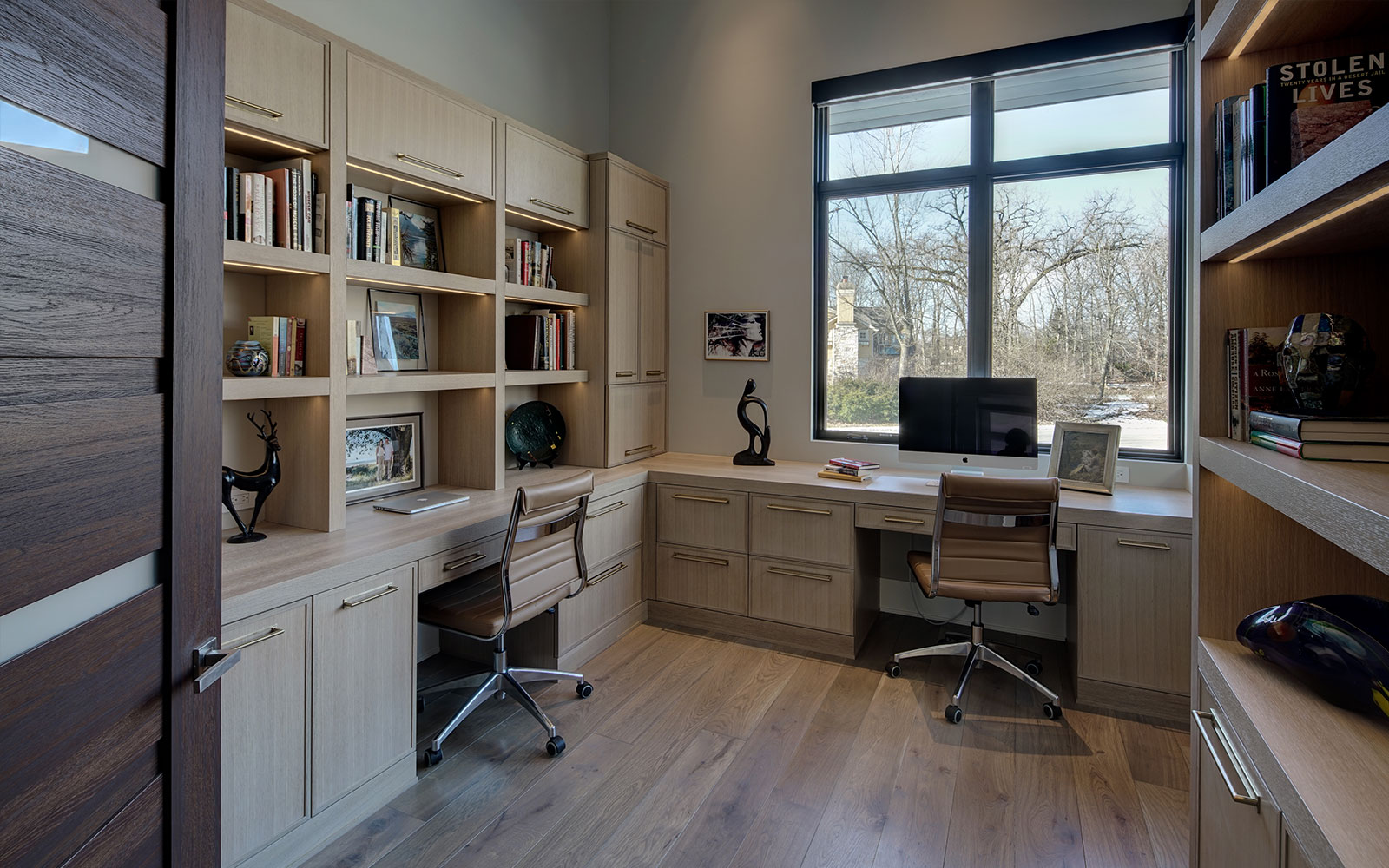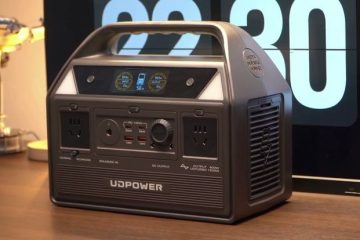Designing a functional home office in your modular home involves a strategic blend of space assessment, ergonomic furniture, and ideal lighting. Start by evaluating the room dimensions, window, and door placements to maximize natural light and integrate noise management solutions. Select durable, ergonomic furniture like adjustable chairs and spacious desks to enhance comfort and productivity. Implement layered lighting solutions, such as task lamps, to reduce eye strain. Employ versatile storage options like floating shelves and multifunctional furniture to maintain organization. To further enhance and personalize your workspace, consider incorporating modern technology and decorative accents that boost both efficiency and aesthetic appeal.
Assessing Your Space
Evaluating the available space in your home is the foundational step to designing a functional and aesthetically pleasing home office. Begin by identifying a dedicated area that can be transformed into a workspace. Ideally, this should be a quiet corner of the house, away from high-traffic areas, to minimize distractions and enhance productivity.
A strategic space layout is vital. Consider the dimensions of the room and the placement of windows and doors, ensuring that you have ample natural light without glare on your screens.
Integrating storage solutions is also essential for maintaining an organized environment. Shelving units, cabinets, and drawers can be tailored to fit the contours of your space, maximizing utility without sacrificing style.
Noise management is another critical factor. Soundproofing options, such as thick rugs, curtains, and acoustic panels, can create a serene atmosphere conducive to work.
If complete soundproofing is not feasible, consider noise-canceling headphones as an effective alternative.
Choosing the Right Furniture
Selecting the right furniture is paramount to creating a home office that is both functional and comfortable. Begin by considering furniture materials; opt for durable and non-toxic options such as solid wood, metal, or high-quality engineered wood. These materials not only lend an aesthetic appeal but also guarantee longevity and safety.
When selecting a desk, prioritize one with ample surface area to accommodate your work essentials without creating clutter.
Ergonomics should be a key focus when picking out chairs. An adjustable chair with adequate lumbar support can prevent back strain, enhancing both comfort and productivity. Additionally, multi-functional pieces can maximize your space efficiency. For instance, a desk with built-in storage solutions or a shelf that doubles as a room divider can save valuable space while adding to the room’s functionality.
Consider incorporating furniture with rounded edges to enhance safety, especially if children might access the area. For modular homes, which often have limited space, choosing compact and versatile furniture can make a significant difference.
Prioritize pieces that can serve multiple purposes, such as a fold-out desk or a storage ottoman. Thoughtful selection of furniture materials and multi-functional pieces guarantees a safe, efficient, and aesthetically pleasing home office.
Lighting Considerations
Effective lighting is essential for creating a productive and comfortable home office environment. The right combination of natural light and task lighting not only enhances visibility but also promotes a sense of well-being and reduces eye strain.
To optimize lighting in your modular home office, consider the following guidelines:
- Maximize Natural Light: Position your desk near windows to take full advantage of natural light. Natural light boosts mood and energy levels while providing an even, diffuse illumination that minimizes glare. However, make sure that the sun’s direct rays do not create harsh shadows or screen reflections.
- Layer Task Lighting: Supplement natural light with focused task lighting to illuminate specific work areas. Adjustable desk lamps with LED bulbs can provide targeted brightness for reading, writing, or computer work, making certain you have ample light without causing discomfort.
- Choose the Right Bulbs: Opt for bulbs with a color temperature between 4000K and 5000K, which closely mimic natural daylight. This range helps maintain alertness and reduces the risk of eye fatigue during extended work periods.
- Ensure Safety: Use fixtures that are safe and compliant with electrical standards to avoid potential hazards. Securely mount all lights and regularly check for any frayed wires or malfunctioning bulbs.
Storage Solutions
In addition to ideal lighting, an organized and efficient storage system is crucial for maintaining a clutter-free and functional home office. By incorporating versatile shelving options and multifunctional furniture, you can maximize space while guaranteeing safety and accessibility.
Shelving options such as floating shelves and modular shelving units provide both aesthetic appeal and practical storage solutions. Floating shelves can be strategically placed to hold commonly used items, keeping them within easy reach. Modular shelving units offer the flexibility to customize your storage layout, allowing for the addition or removal of shelves as your needs evolve. These units can also serve as room dividers, creating defined workspaces in an open-plan modular home.
Multifunctional furniture, such as desks with built-in storage or convertible bookcases, can greatly enhance the functionality of your home office. Desks with integrated drawers and compartments help keep essential documents and supplies organized, reducing clutter. Convertible bookcases that double as workstations or storage benches offer additional utility without compromising on style.
When selecting storage solutions, prioritize materials and designs that guarantee stability and durability, or consider a professional storage facility, minimizing risks associated with heavy items. Opt for units with secure mounting systems to prevent accidents, creating a safe and efficient working environment.
Ergonomic Essentials
Achieving an ergonomic home office setup is vital for enhancing comfort, productivity, and overall well-being. Prioritizing ergonomic essentials will not only optimize your workspace but also protect your health. Here are four important elements to take into account:
- Ergonomic Chair: Invest in a high-quality ergonomic chair that provides ample posture support. Look for adjustable features such as seat height, lumbar support, and armrests to guarantee proper alignment of your spine and reduce strain on your back and neck.
- Adjustable Desk: An adjustable desk, whether sit-stand or height-adjustable, allows you to alternate between sitting and standing positions throughout the day. This flexibility helps to alleviate pressure on your lower back and promotes better circulation.
- Monitor Positioning: Proper monitor placement is essential to prevent eye strain and neck discomfort. Your monitor should be at eye level, about 20 inches from your face. Think about using ergonomic accessories like monitor stands or arms to achieve this ideal positioning.
- Keyboard and Mouse Setup: Confirm your keyboard and mouse are positioned to maintain a neutral wrist posture. Ergonomic accessories such as keyboard trays, wrist rests, and vertically designed mice can greatly reduce the risk of repetitive strain injuries.
Personalizing Your Workspace
While maintaining functionality, personalizing your workspace can greatly enhance motivation and creativity. By thoughtfully integrating decorative accents and carefully chosen color schemes, you can create an environment that is both inspiring and conducive to productivity.
Begin by selecting a color palette that resonates with your personal aesthetic yet also promotes focus and calmness. Soft blues and greens are known for their calming effects, while muted yellows and oranges can stimulate creativity without causing distraction.
Decorative accents play a vital role in personalizing your workspace. Items such as framed artwork, motivational quotes, and family photos can infuse your office with personality and warmth. However, it is important to strike a balance; too many items can lead to clutter, which may hinder productivity. Opt for a few carefully chosen pieces that reflect your unique taste and add a touch of sophistication.
Incorporating plants is another excellent way to personalize your space. Not only do plants enhance the aesthetic appeal, but they also improve air quality and contribute to a healthier work environment.
Make certain that your workspace remains organized and free from hazards by selecting items that are both beautiful and practical. This combination will help create a safe, efficient, and inspiring home office.
Incorporating Technology
Transforming your home office into a tech-savvy workspace is essential for maximizing productivity and efficiency. Integrating modern technology guarantees that your modular home office is not only functional but also future-proof. Below are key elements to take into account:
Smart Devices: Incorporate smart devices such as voice-activated assistants, smart lighting, and intelligent thermostats. These technologies can automate routine tasks, allowing you to focus on your work. For example, smart plugs can be programmed to turn on your office machines at designated times, enhancing both convenience and energy efficiency.
Internet Connectivity: Reliable and high-speed internet connectivity is foundational for any modern home office. Confirm your modular home is equipped with robust Wi-Fi coverage or think about wired Ethernet connections for uninterrupted service. Investing in a quality router and network extenders can mitigate dead zones and connectivity issues.
Ergonomic Setup: Utilize technology to create an ergonomic workspace. Adjustable standing desks, ergonomic chairs with lumbar support, and monitor stands can be easily integrated to promote comfort and reduce strain. Smart desks can even remind you to change positions periodically.
Security Solutions: Protecting your digital workspace is paramount. Employ smart security solutions such as network firewalls, encrypted storage devices, and secure VPN connections. Additionally, confirm your smart devices are updated regularly to safeguard against potential cyber threats.
Conclusion
In summation, crafting a functional home office within a modular home necessitates a meticulous assessment of spatial dynamics, the selection of appropriate furniture, and ideal lighting.
Incorporating efficient storage solutions and ergonomic essentials guarantees both productivity and well-being.
Personalizing the workspace and integrating modern technology further enhances functionality.
Indeed, when each element harmonizes like a well-composed symphony, the result is a workspace that is both aesthetically pleasing and highly practical, fostering an environment conducive to professional success.



